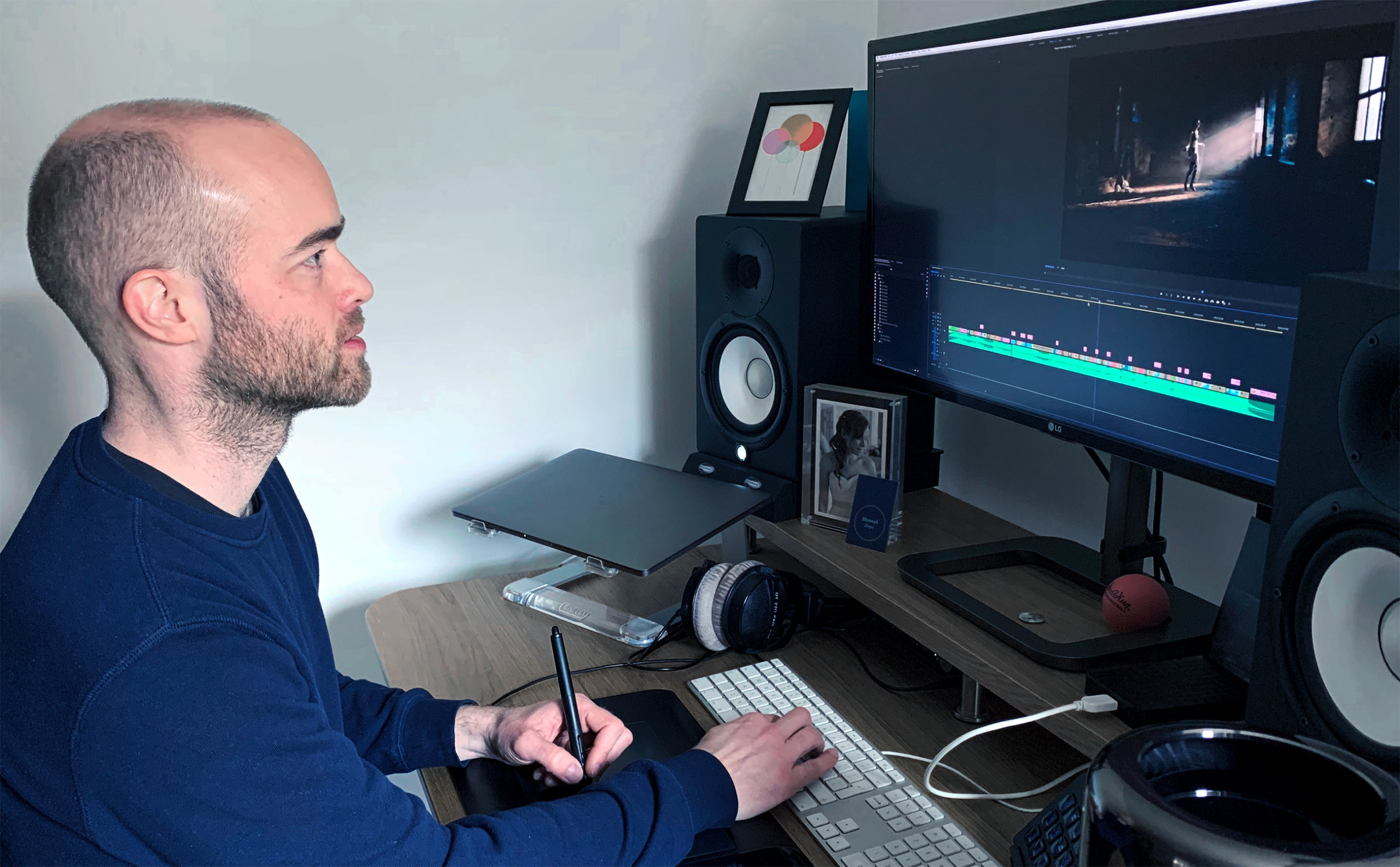I’ve been editing from home for many, many years.
In the decade-plus since, I’ve learned a lot about communication, file management, and productivity. What I’m about to share with you has helped me stay creative, efficient, and sane, and I hope it gives you some good ideas for perfecting your own remote editorial workflow.
This article will focus on at-home editing workflows. You know, like the kind we’re all working from right now.
I’m going to focus on the “at-home” setup primarily, rather than remote editing in the field or at someone else’s facility. That said, the key concepts we’re about to explore will help you work with producers, directors, and clients just about anywhere.
At-home vs on-premises
It’s worth stating right at the beginning that we all have experiential differences in our work lives, and at times like these many of us are still getting used to the idea of remote editing in general. This is probably especially poignant for in-house editors who’ve suddenly been thrown into an at-home workflow.
So, if you’re an editor used to an “on-premises” workflow, and have just recently had to begin working from home, we’ll make direct comparisons to the “normal” way of doing things to help you make the transition more easily.
But first let’s spell out the obvious differences between at-home and on-premises editing workflows:
- When you’re on-premises, all the files are accessible through central storage and network infrastructure.
- On-premises editing allows most creative discussions and feedback to be in person and in front of the edit. That makes nuance, tone, and physical gestures easier to understand.
- Everything stays where it needs to be at the end of an on-premises project—archiving and backups are performed on-site and is often someone else’s job (or automatic).
- Physically working on-premises means you’re always “under watchful eyes” so professional accountability is simpler. Plus, you’re also embedded in an organic community, which builds morale and creativity.
How to get started working from home
As we’ve outlined, there are significant differences between working on-premises at a post facility and working from home. You probably won’t be able to just take your laptop with you and continue working as usual. You’ll have to make some adjustments if you want to do this long term.
So let’s consider the 10 key questions you need to answer if you want to successfully make the transition to working from home.
- How will you communicate effectively?
- How will the files and assets get to you?
- How will you share review files?
- How will you manage feedback and creative conversations?
- How will you work with other collaborators?
- How will you archive the assets?
- How will you maintain a project backup for re-edits?
- How will you manage your time and work effectively?
- How will you maintain good work boundaries within your home?
- How will you use remote working to your advantage?
Let’s take each of them in turn.
1. How will you communicate effectively?
It’s usually ideal to meet the client or producer in person at the start of a project (assuming you don’t already have a working relationship).
This goes a long way in building a professional and personal foundation for the relationship, which is critical when work becomes challenging or deadlines approach. Even just knowing what you both look like and having a sense of each other’s temperament and personality is a big part of a successful collaboration.
But as we’re learning, in-person meetings are not always possible, so a phone or video-call is also a good way to meet and discuss the project brief. You may be tempted to skip this step if you and the client live in divergent time zones, but it’s well worth the effort.
I’m a fan of psychologist Albert Mehrabian’s famous 7/38/55 rule. It suggests that human communication can be understood to be about 7% verbal (the words you use), 38% tonal (the tone of voice you use), and 55% body language when talking about feelings or attitudes.
This is a really helpful idea to keep in mind when learning to communicate with a new client or producer. The extra insight you gain from hearing their voice and seeing their facial expressions and hand gestures will pay dividends down the line.
Regardless of how thorough the briefing process is, be sure to follow every call with a written summary. Include your understanding of the project brief, a list of the required deliverables, the key deadlines/progress milestones, and other pertinent information.
Not only will this give you a valuable paper trail, but it will also help to establish in their mind whether or not you’ve understood their brief correctly. That’s a useful first test for the relationship.
It can also help to ask for specific visual references for anything that they’ve mentioned (ie. the classic “we want it to look really cinematic”) and to ask for clarifications on anything you’re not sure about.
It’s better to be a bit pedantic now, than trying to turn around a confused client at the first viewing (“That’s not what I meant at all!”).
Lastly, a final note about all written communication; always write in a more positive, deferential, and grateful fashion than you think is necessary, because otherwise it will read flatter or more combative than you intend.
Whether or not there’s a place for emoticons in your professional written communication is up to you!
As for the creative brief itself, well I’ve written whole chapters on this topic, but here are some key questions to ask:
- Who are we trying to talk to?
- What are we trying to say?
- Why are we saying it?
- What do we want them to think/feel/do as a result?
- What would success look like? How will we measure it?
- How will the final product be used/distributed/watched/experienced?
- How will it fit in with the brand/website/conference/world/etc.?
- What is the one thing this is all about?
2. How will the files and assets get to you?
Depending on the kind of project you are working on and the amount of footage the project entails, you’ll need to tailor this part of the workflow to each scenario.
This topic has been covered extensively across most types of workflows, from feature films to short form web content, even large-scale entreprise workflows. So I won’t repeat what’s already been said by so many others.
But I will say that you need to seriously consider your workflow requirements and technical capacity before committing to one method or another.
For example, I’ve worked on TV commercials where I could download all the footage with little effort. I’ve also worked on documentary projects where all of the assets were spanned across multiple storage arrays.
In many cases you’ll be able to transfer all the assets online (and that’s usually the ideal).
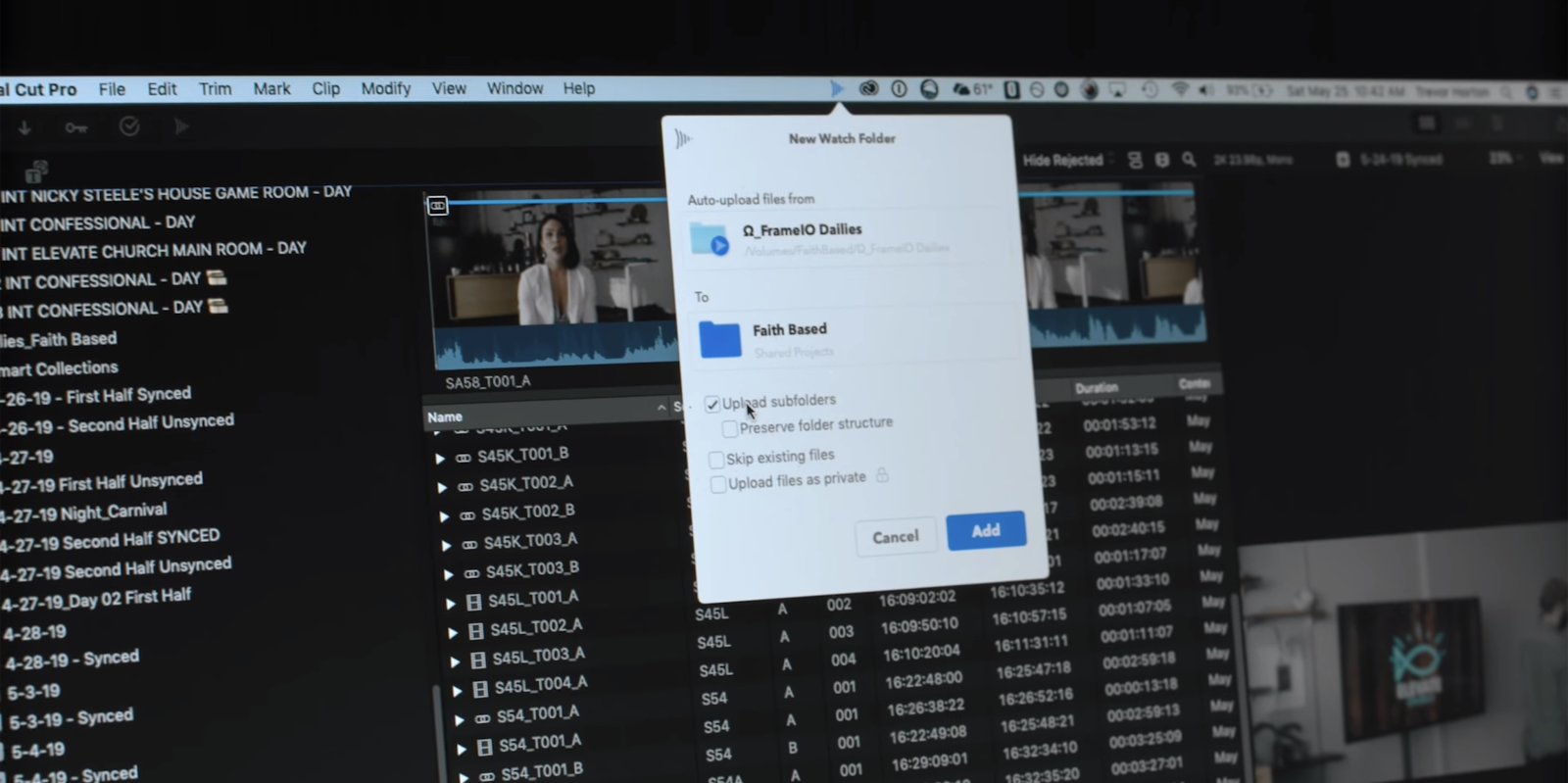
But for some projects, where time is tight and the asset volume large, having the client mail a storage drive with all the footage is the best option.
No matter which method you choose for your project, you should follow these rules.
Rule 0: Ensure redundancy
Make sure there are always multiple copies of the media, preferably held by both you and the client. If they do mail you a drive, always ask them to send a copy of the footage on a spare drive, not the original shoot drive
If the footage is not redundantly stored, you’re risking your whole workflow and professional reputation.
And no, the RAID on your desk doesn’t count as a redundant copy.
Rule 1: Check completeness
Before your client transfers or ships you the footage, make sure you get everything in one go.
This will allow you to start your creative work immediately, and waste less time waiting for more assets to arrive.
And if they ship the footage on drives, it’s always worth paying extra for tracking and next day delivery on both ends. Skimp on this at your peril.
I’ve had drives arrive days late because the client tried to save a few bucks on postage, but the net effect is the client is paying for my (more expensive) time and I can’t start. I’ve also had awkward questions from a client about where a drive is that I sent back.
Luckily I had paid for tracking and delivery verification, so I checked the reference slip to see who signed for it at their office, which happened to be the client themselves!
Make sure you store those receipt slips somewhere safe, until you’re sure the client has the drive back.
Rule 2: Transfer safely
If the client does send you a storage drive, it will likely be a cheap and slow model of questionable reliability.
Depending on the content you’re editing this might work out OK, but it is almost always worth duplicating the footage onto your own local RAID or Thunderbolt drive for better performance.
Just make sure you use something like Hedge to duplicate it with checksum verification, and keep the drive on hand to send back to the client with all of the final assets and deliverables at the end of the project. More on this later.
Hedge will act as your sanity check that makes sure everything was mirrored accurately, and compares folder sizes/the number of files to ensure everything matches.
3. How will you share review files?
It might not seem like a big deal at first, but the process you use for editorial review has a huge effect on the client’s perception of the work, and the creative team’s experience of that feedback.
For example, if you send a file to be downloaded via a transfer service, you might run into problems with corporate firewalls blocking access or clients failing to download the link before it expires. That leads to frustration, which can bleed over into the review process.
Also, if unprompted, clients are likely to send you a list of changes through whatever medium they’re most familiar with, which may not be the best option for creative feedback. On top of that, their notes probably won’t have time-coded references, and they won’t have visibility of other people’s existing feedback.
I shouldn’t have to tell you that it’s an incremental waste of your time to have to switch back and forth between your communication/feedback app (like email) and your NLE project. So then why do it?
The obvious and far better solution is to use the Frame.io extensions for Adobe Premiere Pro, After Effects, Avid Media Composer, Final Cut Pro X and DaVinci Resolve, which bring the essential review/approval process directly into your NLE.
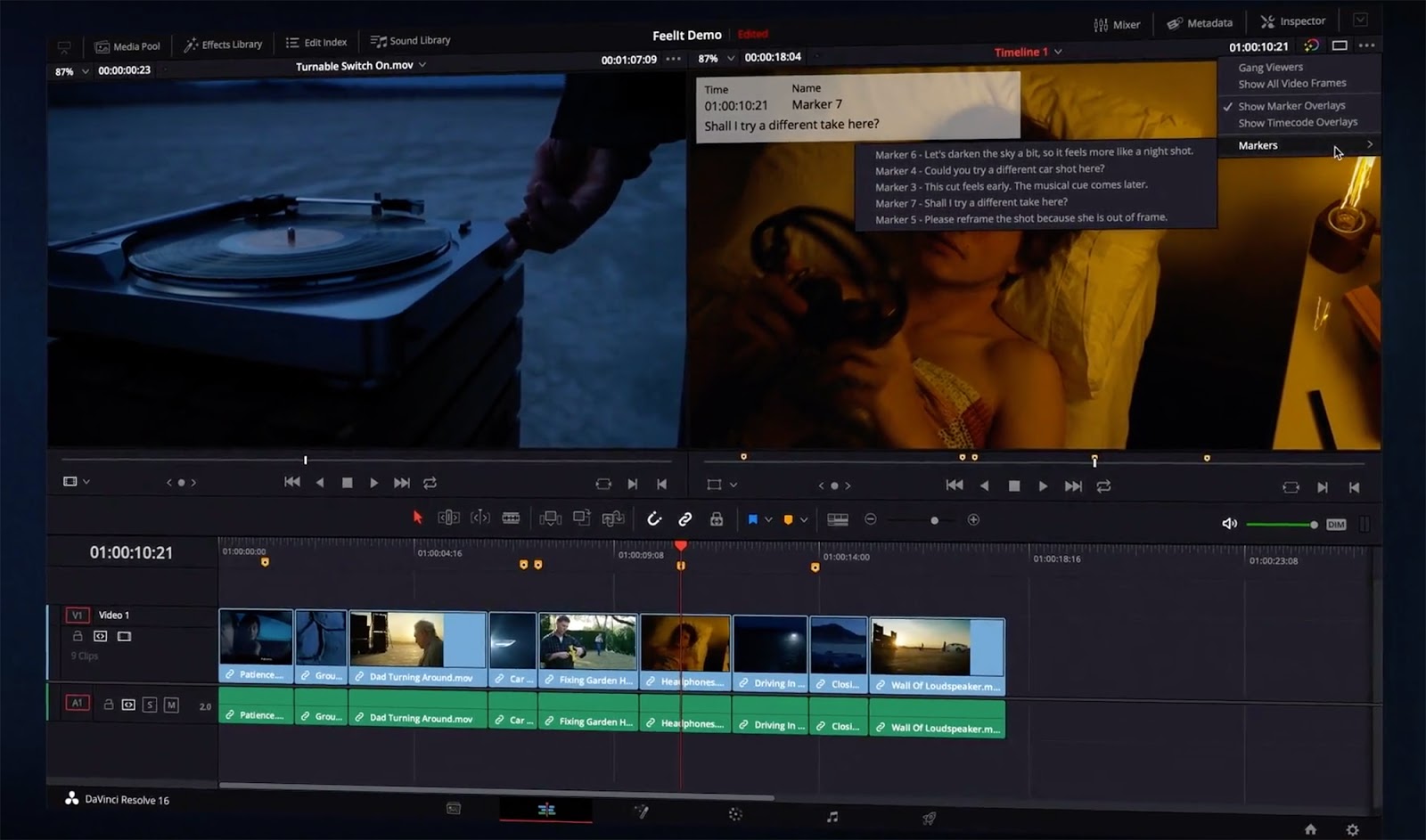
You can upload edits quickly, maintain versioning controls, download client comments in real time, and complete tasks all within your project. The task management, annotations, and tagging features make the whole experience even better.
But if you’re working with a client who refuses to engage with modern platforms, and only wants to give “paper” notes, I suggest the PDF viewer from Primal Cuts for Premiere Pro.
This tool allows you to keep a PDF of client notes open inside your NLE, which at least keeps you from having to switch between apps. It’s not the best option by any stretch of the imagination, but it’s a small improvement that can make a big difference if you have no other choice.
4. How will you manage feedback and creative conversations?
The success of a project, and in turn the prosperity of a client relationship, often hinges on how you navigate creative conversations and feedback sessions.
Ideas, creative suggestions, and subjective decision-making all come with some amount of ego attached. Hopefully you’re creatively invested in the project and you care about the artistic outcome of the final product enough. But, ultimately, editors serve the creative vision/purpose of the client.
I suggest you tread lightly around creative suggestions. Consistently defer to the client’s vision, but offer a healthy dose of “loyal opposition” to any less-than-perfect ideas that might impinge on the ultimate outcome of the project.
Depending on how much you’ve worked with your client or how media savvy they are, you might want to approach a feedback session with varying degrees of hand-holding and engagement.
One option, if you’ve never worked with this client, or they’ve not made many videos before, is to arrange a phone or video call with them where they watch the edit with you “in the room.”
This way you can see how they are reacting, answer any questions on the fly (“yes, the graphics are temp right now.”), and explain some of your decision-making.
But if you’re confident they don’t need this level of interaction, then sending a review link and waiting for their feedback can be a far more efficient use of everyone’s time.
It’s also worth considering varying your approach depending on what stage the project is in. An early ‘content cut’ might need a more hands on approach with the client, as it is less visually polished and that might raise questions for those less familiar with the editorial process.
Later on down the line, timecode-specific, detailed comments are a much better way of dealing with the fine tuning of specific edits, text elements, or problems.
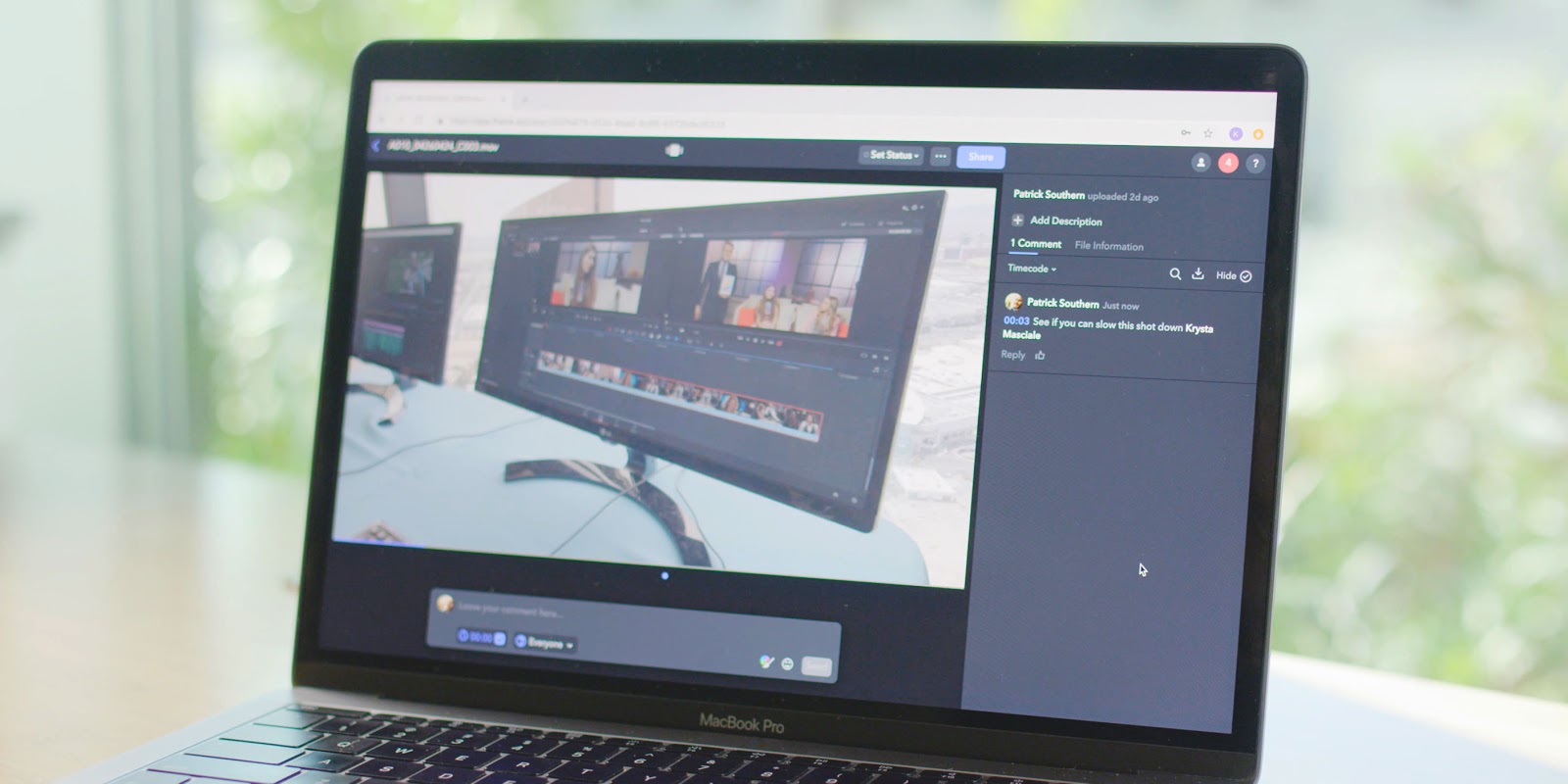
However you decide to handle feedback and creative conversations, if something isn’t clear in the feedback or you think a quick phone call will drastically improve the clarity of the situation, pick up the phone rather than sending 20 text messages or emails back and forth.
One final suggestion is to try to aggregate all of the stakeholders in the feedback loop into specific rounds. Not only does this save them time and money by avoiding a continuous dribble of feedback, it often helps to mitigate uncomfortable situations—like when the producer is happy, and the client is happy, but the client’s boss is unhappy after jumping in on version 7 and saying they hate everything.
One of the things I also like about group feedback sessions, where comments are visible to the whole team, is that clients often reply to suggestions or discuss ideas in the comments between themselves and so often cancel out the worst ideas themselves—without you having to say anything!
5. How will you work with other collaborators?
Most of the time, I take on whole projects myself, delivering the entire edit, grade, sound design, and motion graphics to the client in one finished product.
But there are times when I’m leading a team of creatives. That might require bringing together renders from 3D VFX artists, sending sequences out to a sound designer for mixing, or delivering an offline edit to a colorist.
In these situations, it’s important to remember that all of the key communication skills we’ve discussed so far apply to other creative collaborators. They have just as much sensitivity to critique as anyone else (and sometimes more).

An easy example to think about. Imagine you’re working with a composer on a project, but you’ve already dropped temp music into the edit. The most artistically liberating thing you could say to the composer is “Please match the tempo of the edit, but feel free to bring your own creativity to it.” And then to send them a cut with no temp at all.
On the other hand, sending them an edit with the temp track on, and just asking them to match it will diminish their creative input (which they are being paid for) and likely dampen your working relationship.
It is also worth conducting a ‘mini-brief’ with each collaborator, so that all of the creative and technical elements will align towards the final goal seamlessly.
- What are the particulars of how they like to work best?
- What format, specification, handles, codec, and resolution do they require from you?
- What format, specification, handles, codec, and resolution do you require from them?
- Do you want them to send you the component parts or the finished element?
This last point is particularly important with audio stems, motion graphics, and conformed color grades, because you might need to be able to break these apart in the future to make further amendments or versions.
Here are three quick examples (these will help with point 7 below) of when this type of communication is critical.
If you requested separate audio stems for the sound mix, you might not know that some elements of compression and EQ that are applied to the final mix might be lost in the stem-only version. A competent sound mixer would know this, but you may not realize it unless you communicate thoroughly.
Or if you are working with a motion designer, and you needed to make sure graphical elements can be changed in the future (e.g. lower thirds or numbers in charts). Make sure the MOGRTs or project files they give you are adequately adjustable. If you needed major rework down the road, hopefully you could rehire the same motion graphics artist, but that’s not always possible, so it’s best to cover your bases..
And if you’re having color work done, make sure you get a textless version of the grades and final conforms, so you can make similar changes in the future.
Having everyone work on the same review platform can really help keep these sorts of communication lines clear. It also helps keep your project files organized and everyone in sync on the latest version.
If you are frequently exchanging files between collaborators over the course of a project (especially as the version number ticks up), be sure to maintain clear file naming conventions.

I like the film production habit of color coding pages of script changes. If everyone else on set is holding blue pages, but yours are green, you’ll instantly know you’re behind the curve.
Of course, since we don’t use real paper files, I like to add a different color tags to each version of the files. That helps me keep everyone up to date and on track.
As with any complex workflow, it’s best to run full tests across teams/departments before committing to a new process.
6. How will you archive the assets?
As a freelance editor who takes on huge numbers of jobs each year, I wouldn’t want to maintain a full copy of each and every project I work on.
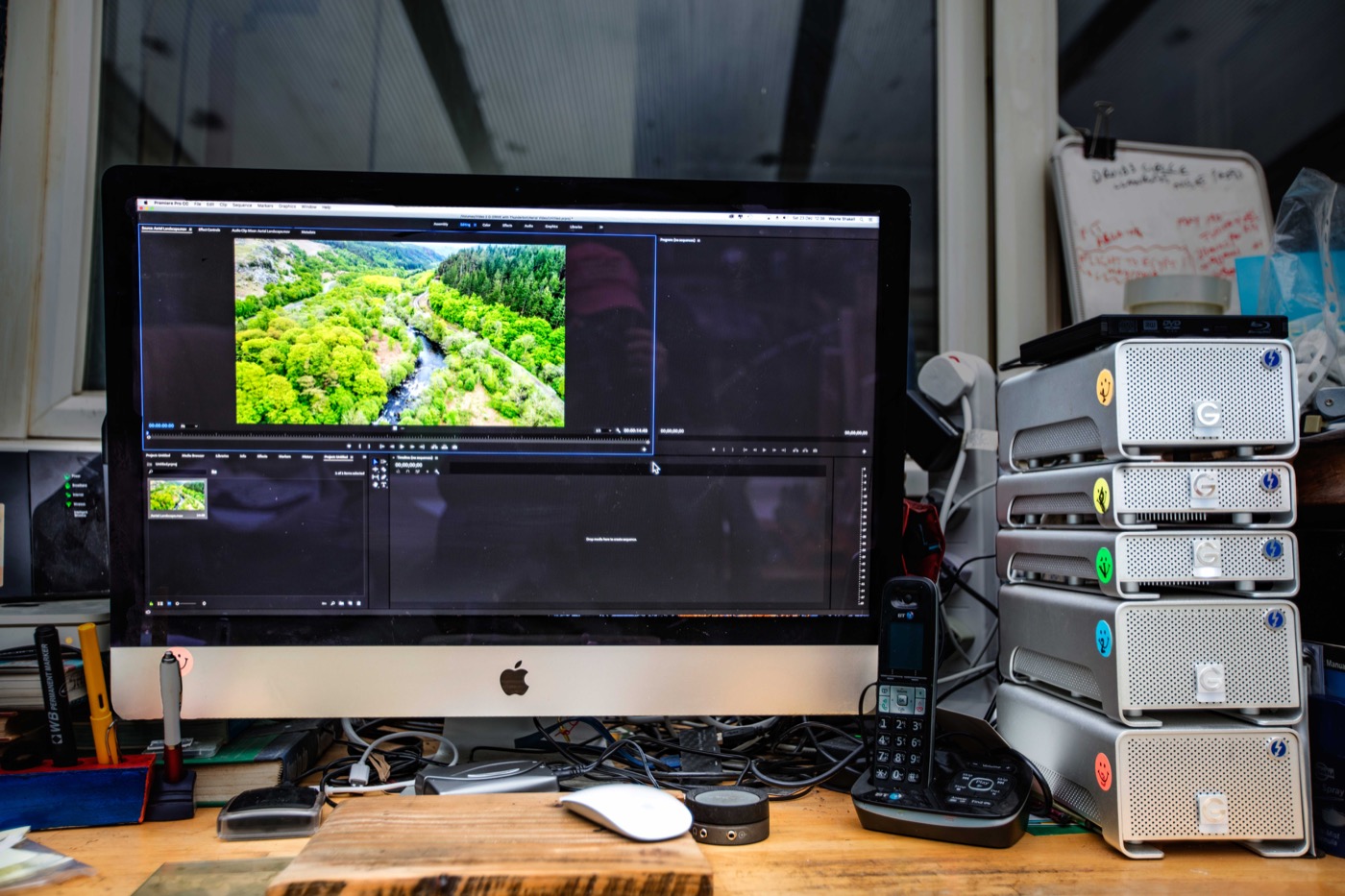
I could certainly do it, and charge the client an extra fee for storing the drive or moving everything to LTO tape, but two issues arise from this.
- I’d have to safely store and maintain dozens and dozens of drives. I don’t have the physical space or time to do that.
- I’d be entering into that obligation, potentially indefinitely. What if something goes wrong and I lose everything—how will that affect my client relationships?
I much prefer to send the client a copy of everything—all of the final deliverables, all of the project assets, and all of the source footage so that the archival responsibility is theirs.
But there are two caveats to this.
First, depending on your ownership agreement with them, you might not want to send them the project files and original music tracks. With some contracts, they’ll have to come back to you for any reworks on the project. And if they don’t own all the footage, you probably won’t want them to have access to it for other projects.
Second, be sure to communicate very clearly with the client which assets they need to back up at their end to maintain their own complete archive.
I have a very simple methodology for this.
If the client has sent me a hard drive of raw footage, I will place all of the footage (maintaining their existing subfolders) into a main top folder called “FOOTAGE”. Everything else I create during the project such as graphics, mixes, music, and other documents/assets I put into a main top folder called “EDIT”.
This way I can tell them they just need to copy the entire EDIT folder to their system and not worry about the FOOTAGE folder, as they already have it.
7. How will you maintain a project backup for re-edits?
Having said all that, I would highly recommend that you maintain a small backup of the project’s functional assets, somewhere you can easily access it. That might be on your own local RAID or archived to the cloud.

Doing this correctly is one of the easiest ways to pave the way for potentially ‘easy money’ down the line, through future updates, tweaks, or re-edits.
It also means you’ll actually have a copy of all your finished work when you finally get around to updating your reel or portfolio.
If a client does come back to you to create a subtitled version, or a new export for Instagram, or whatever, think about the business implications of this ask.
Either the job will be large enough to charge a day (or a half-day or an hour or whatever your minimum unit is) of your time, or small enough that you can give it to your client for free and earn some favor with them going forward.
But beware of undertaking a “small change” that actually produces a lot of work when it comes to rendering out updated deliverables.
For example, updating a job role on a lower third might seem simple. But if there is a UK and US version online, and a square social version of each, that would be six new deliverables when you include two new master files as well.
It might take a few seconds to amend the graphic, but several hours to render the files and send them to the client.
So what are the functional assets I keep in my ‘local’ project backup?
- Master export of the final edits in ProRes and full resolution
- Clean master of the same edits with no text or music
- All final deliverables such as web, subtitle, and social versions
- All project files, graphics, fonts, audio stems, music tracks, sound effects, etc.
- All documents relating to the brief and changes
- A media-managed version of the final timeline(s) with small handles
As you can see from this list, I essentially keep everything but the original media from the project, because most of the projects I work on tend to be short-form. Therefore, I’m not storing the assets needed to re-create multiple episodes of a 45-minute TV show.
You will need to find the balance required by your typical client work, your back up capacity, and the frequency of return work.
8. How will you manage your time and work effectively?
As we discuss working productively, I’m mostly going to assume your remote edit suite is in your home.
If you have the luxury of a physically separate space, some of these comments won’t apply, but for the rest of us, hopefully they’ll help you enjoy your remote editing experience.
First, time management is a fairly personal thing. Some people like to work under the pressure of a deadline. Others don’t mind working late into the night.
Whatever you choose, I would recommend being intentional about it. I know some creatives tend to oscillate through unpredictable hours and working patterns, which usually leaves them looking and feeling the worse for wear afterwards.

Personally, I would suggest sticking to a set daily schedule, Monday to Friday 9-5 style and making a habit of it.
Start work at the same time and finish at the same time (as much as your project permits), eat lunch at the same time, make that afternoon beverage around the same time. Adding this structure and routine to your otherwise fairly flexible existence will help you in the long term.
This routine can also help when it comes to providing a budget for the client. If your day is already broken up into discreet chunks, it should give you a more accurate estimate of how long a project will take you to complete. Try to stick to those estimates as best as you can, and adjust the cost if you have to go over (assuming overages are in your contract). This will help you stay on budget, and it will provide a built-in schedule for you to check your progress against.
For example, in a 5 day edit you might want the rough cut done by the end of day 2 with an overnight review. That means the first round of content changes can happen on day 3, with final polishing and sign off on day 4, and last-minute tweaks and delivery on day 5.
When director Gareth Edwards (Star Wars: Rogue One) was completing his breakout feature Monsters, he created all of the visual effects himself. To manage his time effectively, he created a spreadsheet with a detailed shot list and time allotment to all of the required VFX tasks.
He then selected 8 hours worth of work for the whole day. It simplified his daily “what am I going to do today” process down to a question of what was next on the list.
If this level of granularity works for you and your project, it might be worth creating at the start. It will help keep you on target.
Defeating distractions will also be a valuable skill to master, either from others in your home or from your social and electronic communication.
As I write this, I had to turn my phone over so I can’t be distracted by notifications (turn them all off anyway!) and minimize my browser window too.
Admittedly, this level of focus is normally easier to achieve, as my entire computer screen is usually filled with my creative app. But if you can, I’d suggest trying to sanction your social media time, YouTube browsing, and emailing to specific times in the day, such as your lunch break.
The more you focus, the faster you’ll finish.
As primetime editor Zack Arnold insists, taking regular breaks, moving around, and eating healthy snacks are also intentional choices that will have dramatic positive repercussions on the longevity and sustainability of your creative career.
9. How will you maintain good work boundaries within your home?
As legendary author Stephen King suggests in his excellent book, On Writing, the key to successful productivity is to “go in the room and shut the door.”
Having a specific and dedicated place to do your work is a huge blessing if your circumstances can afford it.
I have worked from home for most of my editing career. That has evolved from a desk in our tiny living room (that I packed up every day), to a dedicated home office edit suite.
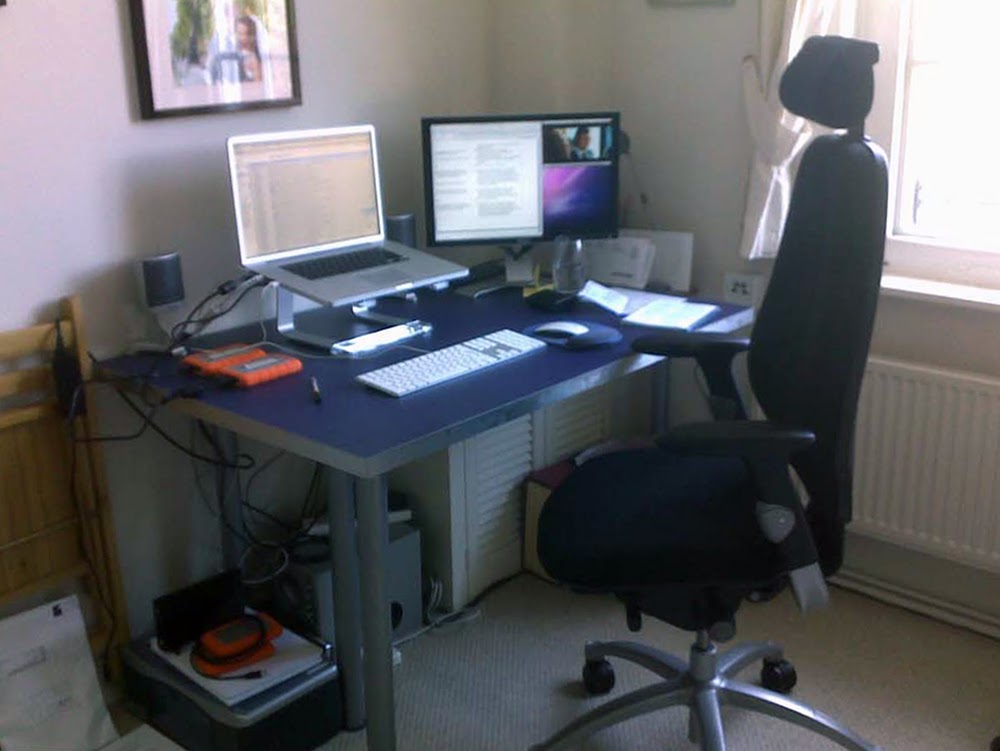
Whatever your situation, be intentional about where, when, and how you work. This will help you maintain good boundaries between your working life and your home life.
Don’t answer client emails after you’ve finished your working day and on weekends if you can absolutely help it. Otherwise you’re setting an expectation that you will be available or responsive at all hours.
Also decide if you’re going to have a “rule” about working weekends. Mine is, I don’t. I’d rather be with my family. Unless there is some overwhelmingly positive reason to work that one weekend, I’d rather say no.
I’d argue that firm weekends will better equip you to handle the working week.
If you maintain work boundaries, everyone else in your life will appreciate the benefits, especially you. Work is important but it’s not everything.
10. How will you use remote working to your advantage?
For some people, working from home is a tiresome, lonely, uphill struggle to even be productive.
If this is how you feel, know that you’re not alone! But in the spirit of “know thy self” be aware of the elements of your on-premises working environment that you miss most naturally. This could be things like office banter, structured time, and specific productivity targets.
Try to find ways to compensate for these by checking in with others at lunch, or having someone hold you to account for the day’s progress.
But the huge advantage to working remotely is that you have moved from being paid to be in a specific building for a specific duration of the day to being paid based on delivering the required results.
The faster you deliver the results, the more time you’ll recoup as your own. Rare is the employer who will allow you to come home at 3pm because you got everything you needed to done that day.
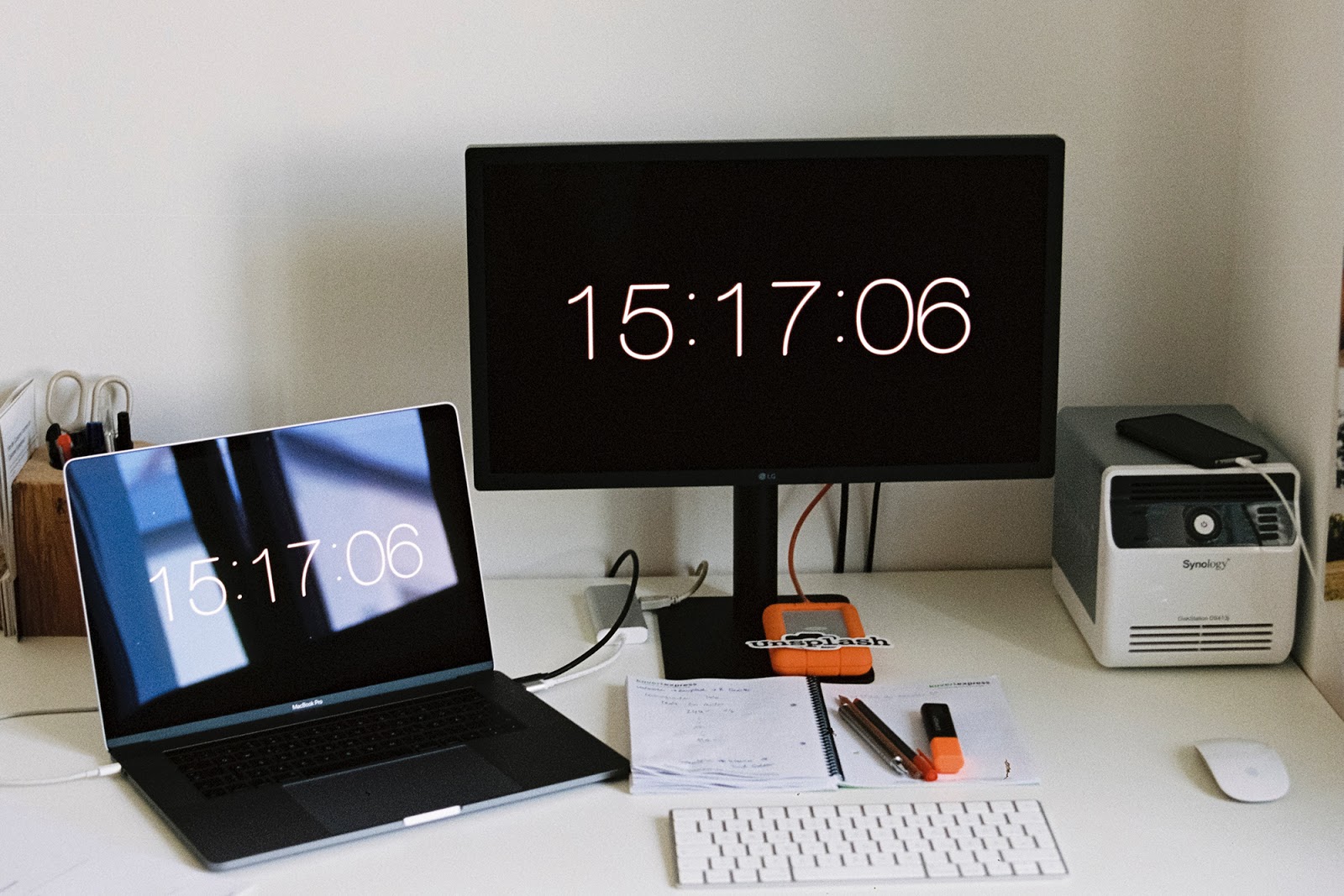
If you’re considering moving to a remote lifestyle, here are a few of the benefits you can expect.
- You can use your “commute” time to do other things that you actually enjoy. Try to carve out that pre-work time to your benefit if you can.
- There is a huge flexibility with your time which can be applied to family commitments.
- There’s always someone in for deliveries to you or your neighbors.
- You can take the lead on household chores and admin during a break, which your significant other will hugely appreciate.
These might seem like minor things, but added up day by day, week by week, year by year, they make your whole life far more enjoyable and productive.
I hope you will discover the same.

